Understanding Male Hypogonadism
Definition of Hypogonadism
Male hypogonadism is a condition characterized by the underproduction of testosterone from the testes, the male sex glands. This hormone plays a crucial role in many aspects of male health, including sexual development, sperm production, and overall well-being. When testosterone levels fall below the normal range, it can lead to a variety of physical and psychological issues. Imagine a confident young man who suddenly begins to feel fatigued and loses interest in activities he once loved. It might just be the beginning of a journey into understanding male hypogonadism. It’s important to recognize that this condition is not just about low libido or sexual performance; it can impact many facets of life.
Types of Male Hypogonadism
There are two primary types of male hypogonadism, each with distinct causes and implications:
- Primary Hypogonadism: This type occurs when the testes themselves are dysfunctional. It’s akin to a factory that simply isn’t producing enough product. Causes can include:
- Genetic conditions (such as Klinefelter syndrome)
- Injury or trauma to the testes
- Conditions that cause inflammation or damage (like mumps orchitis)
- Secondary Hypogonadism: In this case, the issue lies in the hypothalamus or pituitary gland, which signals the testes to produce testosterone. Think of it as a malfunctioning control room that fails to send the right signals. Causes often include:
- Hormonal imbalances
- Tumors affecting the pituitary gland
- Chronic illnesses and medications
Understanding these two types is vital because they dictate treatment paths. If you or someone you know is experiencing symptoms, knowing whether it’s primary or secondary can steer the way toward finding the right help. This knowledge equips you to navigate the complex landscape of male hypogonadism, ensuring you can seek the most appropriate treatment.
Causes and Risk Factors
Primary Hypogonadism Causes
Primary hypogonadism occurs when the testes fail to produce sufficient testosterone due to a direct issue with the testicles themselves. Picture this as a factory where the machinery is either malfunctioning or unable to operate correctly. Some common causes include:
- Klinefelter Syndrome: This genetic condition results from an extra X chromosome in males, leading to abnormal development of the testicles affecting testosterone production.
- Undescended Testicles: If the testicles don’t descend properly before birth, it can hinder their function, greatly impacting hormone levels.
- Infections: Mumps orchitis, a mumps infection affecting the testicles, can lead to significant damage and impaired testosterone production in adolescents or adults.
- Hemochromatosis: This condition, marked by excessive iron in the body, can damage both the testes and pituitary gland, impacting testosterone secretion.
- Physical Injury: Trauma to the testicles can significantly reduce testosterone output.
These examples illustrate how critical testicular health is to maintaining testosterone levels. Suppose you’ve ever experienced a severe injury in the groin area. In that case, you might relate to the heightened concern over such conditions.
Secondary Hypogonadism Causes
Secondary hypogonadism is characterized by problems in the hypothalamus or pituitary gland, which are responsible for signaling the testes to produce testosterone. Think of this as a communication breakdown between the brain and the factory. Key causes entail:
- Kallmann Syndrome: This genetic disorder affects brain development and may interfere not just with hormone production but also smell.
- Pituitary Disorders: Tumors, surgery, or radiation affecting the pituitary gland can disrupt its hormone signaling, leading to decreased testosterone production.
- Inflammatory Diseases: Conditions like sarcoidosis can affect the hypothalamus and pituitary gland, resulting in hormonal imbalances.
- Medications: Some treatments, particularly opioids, might hinder testosterone production, emphasizing the importance of discussing medications with your healthcare provider.
- Obesity and Aging: As men age, especially past 40-50, testosterone production naturally declines. Combined with obesity, this can compound the issue.
Risk Factors for Male Hypogonadism
Being aware of risk factors can empower you to take proactive steps for your health. Key risk factors include:
- Family History: If male hypogonadism has impacted your family, it’s worth discussing it with your doctor.
- HIV/AIDS: This condition has been linked to low testosterone levels.
- Previous Cancer Treatment: Chemotherapy or radiation therapy may affect hormone production.
- Malnutrition: A poor diet can lead to hormonal imbalances.
Recognizing these causes and risk factors is crucial, as it can help you or someone you know seek timely medical advice and appropriate treatment options for male hypogonadism. Treatment options can include hormone replacement therapy, lifestyle changes, and, in some cases, surgery. By staying informed and engaged with your health, you can promote well-being and vitality.
Signs and Symptoms
Physical Symptoms
Recognizing the physical manifestations of male hypogonadism can be crucial for early intervention. The symptoms you may experience can vary greatly depending on when hypogonadism occurs—whether in fetal development, puberty, or adulthood. Here are some of the most common physical signs:
- Decreased Sex Drive: Many men report a notable dip in libido, leaving them feeling disinterested or detached in intimate relationships.
- Erectile Dysfunction: Struggling to achieve or maintain an erection can be frustrating and is one of the most commonly discussed symptoms.
- Infertility: Lower sperm production can lead to difficulty in conceiving, impacting family planning.
- Decrease in Facial and Body Hair: If you’ve noticed less hair growth or a thinning beard, this can be related to low testosterone.
- Loss of Muscle Mass: A noticeable reduction in muscle bulk can make any fitness goals feel harder to achieve.
- Gynecomastia: The development of breast tissue can be distressing for many men, often leading to embarrassment.
These physical changes can significantly impact a man’s sense of self and confidence. If you’ve ever faced challenges with intimacy or felt your energy levels dropping, you may relate to these experiences.
Psychological Symptoms
Male hypogonadism can present through various physical symptoms that affect both physical and emotional well-being. These signs often vary depending on when the condition develops—during fetal growth, puberty, or adulthood. Common symptoms include a decreased sex drive, which may leave men feeling detached in intimate relationships, and erectile dysfunction, which can lead to frustration and challenges in personal life. Infertility due to reduced sperm production may also impact family planning, while physical changes such as gynecomastia (development of breast tissue), loss of facial and body hair, and decreased muscle mass can affect self-confidence and fitness goals.
These symptoms often cause a profound impact on overall energy levels, sense of masculinity, and ability to maintain relationships. Addressing these concerns early is vital for improving quality of life and regaining confidence. Whether you’re dealing with low energy, challenges in intimacy, or difficulties achieving your fitness objectives, solutions are available to support your health.
Bio Genetics USA offers high-quality products designed to help men combat the effects of hypogonadism and reclaim their vitality. Don’t let these symptoms hold you back—explore Bio Genetics USA today and take the first step toward a healthier, more confident you!
Treatment Options
Testosterone Replacement Therapy
When testosterone levels drop a lot, testosterone replacement therapy (TRT) is often used to treat male hypogonadism. It helps replenish your body’s testosterone. There are different ways to deliver TRT, including injections, patches, gels, buccal tablets, and implants. You can choose a method that fits your lifestyle and personal preferences. Here’s a quick rundown:
- Injections: These often involve testosterone enanthate or testosterone cypionate, administered every 1 to 2 weeks. Many individuals opt for this due to its effectiveness and direct delivery into the bloodstream.
- Transdermal Gels/Patches: For those who prefer a daily routine, testosterone gels or patches applied to the skin offer a steady release of hormones. Just be cautious—avoid skin contact with others until it’s fully absorbed.
- Pellets: Implanted under the skin, pellets release testosterone over several months. For those who desire minimal hassle, this could be an ideal option.
Taking testosterone replacement therapy (TRT) can help improve issues like low sex drive, tiredness, and loss of muscle mass. It’s important to check in with your doctor while on this treatment regularly. They can monitor your testosterone levels and change the dosage if needed.
Lifestyle Changes
Making lifestyle changes can significantly improve your overall well-being and help manage testosterone levels naturally. Regular exercise is essential, particularly a combination of strength training and cardiovascular workouts. This approach not only helps maintain muscle mass but also combats obesity, a common factor linked to reduced testosterone production. Pairing physical activity with a nutritious diet can further optimize your hormone levels. Focus on whole foods rich in healthy fats, proteins, and fiber, such as avocados, nuts, olive oil, and lean meats, to support your body’s hormonal balance.
Stress management is equally crucial in maintaining optimal testosterone levels. Prolonged stress increases cortisol production, which can negatively impact testosterone. Incorporating stress-reducing activities like yoga, meditation, or simple leisure pursuits can make a big difference. Holistic adjustments to your lifestyle often complement medical treatments, helping you feel more energized and in control.
User of Proviron
Proviron (mesterolone) is an anabolic steroid often discussed in the context of male hypogonadism. While not a direct testosterone replacement, it can help improve symptoms in men with low testosterone levels, particularly when TRT is not an ideal option.
- Mechanism: Proviron works by binding to androgen receptors, providing androgenic benefits without suppressing the body’s testosterone production significantly. As such, it may enhance libido and improve overall well-being.
- Usage: Individuals considering Proviron should consult with healthcare providers to ensure it fits their treatment plan, as well as to avoid potential side effects and ensure proper management.
Understanding these treatment options empowers you to discuss them openly with your provider, leading to a tailored approach to managing male hypogonadism and boosting your quality of life. Taking charge of your health journey is a significant step toward feeling your best!
Conclusion
Recognizing the Importance of Hormonal Health
As we’ve explored throughout this discussion, low testosterone, or low T, is often a silent struggle—one that can have significant implications on many facets of a man’s life. It’s crucial to recognize that testosterone plays a pivotal role in your overall health, affecting everything from physical fitness to emotional well-being. Many men may dismiss symptoms such as fatigue, decreased libido, or mood changes as simply part of aging. However, acknowledging these signs can be the first step towards reclaiming your vitality. Remember, anyone experiencing these symptoms shouldn’t hesitate to consult with a healthcare provider.
Why Early Detection Matters
Early detection and treatment for low testosterone are essential. By catching symptoms early, you can:
- Prevent Further Complications: Low testosterone can lead to decreased muscle mass, increased body fat, and higher risks of osteoporosis. Addressing it promptly helps mitigate these risks.
- Improve Quality of Life: Testosterone replacement therapy (TRT) has been shown to alleviate many symptoms associated with low T, enhancing energy levels, mood, and overall health.
- Tailor Treatment Plans: Everyone’s body responds differently. Close collaboration with healthcare providers can ensure that your treatment regimen—be it TRT or lifestyle adjustments—is customized for your specific health needs.
Looking Ahead
Understanding and managing low testosterone can be a complex process. Still, it’s important to recognize that many men encounter similar issues. Recent advancements in medical treatments have made effective management of low testosterone more accessible than ever. It is crucial to take an active role in your health by staying informed, seeking assistance when necessary, and discussing all available treatment options with your healthcare provider. With the right support and timely intervention, managing low testosterone can lead to significant improvements in overall well-being. Prioritizing your health is essential, as it can help you achieve a more vibrant and fulfilling life.






